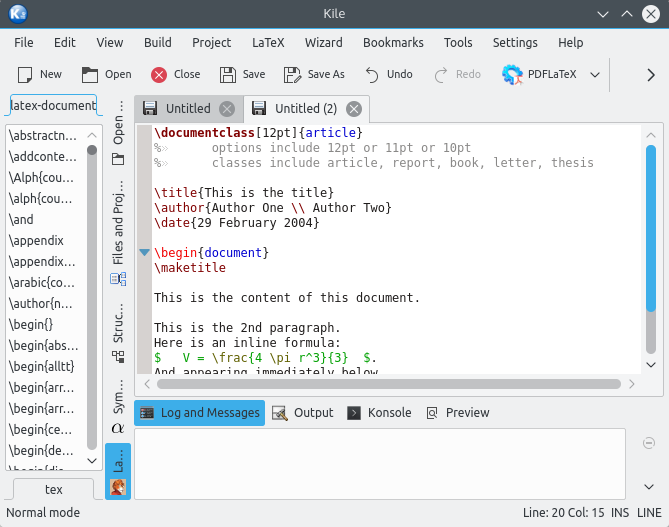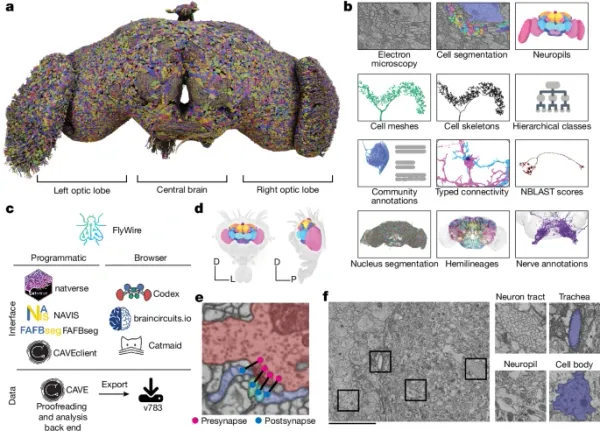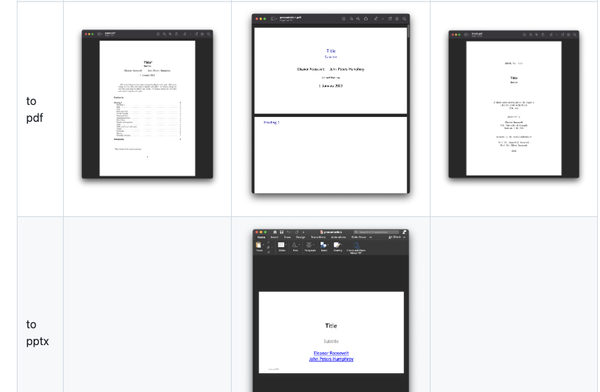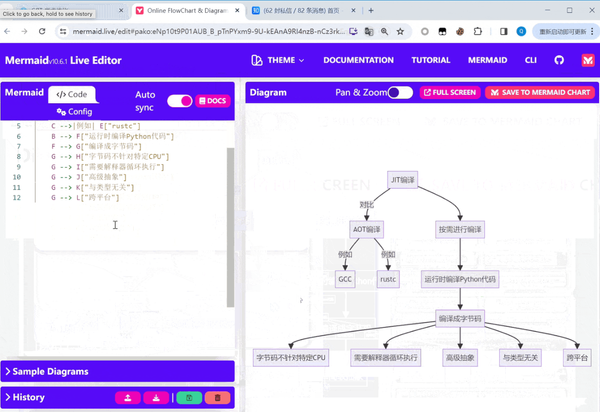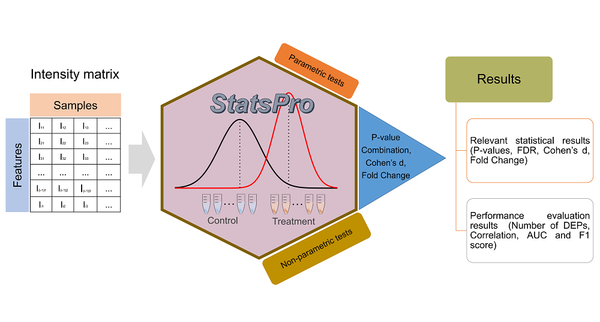Kile - May Be The Best LaTeX IDE for Linux, Windows and macOS
Kile: The Ultimate LaTeX Editor for Efficient Document Creation
Are You Truly Ready to Put Your Mobile or Web App to the Test?
Don`t just assume your app works—ensure it`s flawless, secure, and user-friendly with expert testing. 🚀
Why Third-Party Testing is Essential for Your Application and Website?We are ready to test, evaluate and report your app, ERP system, or customer/ patients workflow
With a detailed report about all findings
Contact us nowTable of Content
What is LaTeX?
LaTeX, a powerful typesetting system for academic and scientific writing, requires an efficient editor. Enter Kile, an open-source LaTeX editor designed to streamline document creation and management. This feature-rich tool caters to both beginners and advanced users, offering a user-friendly interface and powerful functionality.
In this post, we'll explore Kile's key features, supported platforms, and why it's an essential tool for LaTeX users of all levels.
What is Kile?
Kile is a user-friendly, open-source LaTeX environment developed as part of the KDE project. It simplifies LaTeX complexities through a graphical interface and productivity-enhancing features. Kile caters to various document types, from scientific papers to books, providing the necessary tools for efficient creation and editing.
Whether you're writing a research paper or compiling a technical report, Kile offers a streamlined workflow to get your work done effectively.
Key Features of Kile
Kile is loaded with powerful features that cater to both new and experienced LaTeX users. Below are some of the key highlights:
1. Integrated LaTeX Editing Environment
Kile offers a comprehensive LaTeX editing environment that seamlessly integrates a powerful text editor, an intuitive preview tool, and a versatile build system. This all-in-one approach significantly streamlines the document creation process, allowing users to edit, compile, and view their work without the need to switch between different applications.
The unified interface not only enhances productivity but also provides a more cohesive and efficient workflow for LaTeX users of all skill levels.
Some key features that make Kile stand out include:
- Advanced Syntax Highlighting: Kile employs sophisticated color-coding for LaTeX syntax, making it considerably easier to read, write, and debug code. This feature helps users quickly identify different elements of their document structure, commands, and potential errors, thereby improving overall code readability and reducing the likelihood of syntax-related issues.
- Intelligent Auto-completion: As users type, Kile provides context-aware suggestions for LaTeX commands, environments, and even custom-defined macros. This intelligent auto-completion feature not only reduces the chances of typing errors but also significantly speeds up the writing process. It's particularly beneficial for users who are new to LaTeX or working with complex document structures, as it helps them discover and correctly implement various LaTeX functionalities.
- Real-time Error Checking: Kile includes a built-in error checking mechanism that analyzes your LaTeX code in real-time. This feature helps identify potential issues such as missing brackets, undefined references, or improper command usage as you type, allowing for immediate corrections and reducing compilation errors.
- Customizable Shortcuts: Kile allows users to define and modify keyboard shortcuts for frequently used LaTeX commands and environments. This customization feature enables users to tailor the editor to their specific workflow, further enhancing productivity and ease of use.
2. Multiple Build Tools
Kile offers robust support for multiple build systems, including LaTeX, pdfLaTeX, XeLaTeX, and LuaLaTeX. This versatility enables users to generate output in various formats such as PDF, DVI, and PostScript, catering to different publication requirements and personal preferences. The flexibility in build systems allows users to leverage the strengths of each engine, whether it's the traditional LaTeX for its stability, pdfLaTeX for direct PDF output, XeLaTeX for enhanced Unicode and modern font support, or LuaLaTeX for its integration of the Lua scripting language.
- Quick Preview: Kile's quick preview feature allows users to compile and view only the specific part of the document they're currently working on. This targeted approach significantly reduces compilation time, especially for large documents, enabling faster iterations and a more efficient editing process. The quick preview functionality is particularly useful when fine-tuning complex equations, tables, or figures, as it provides immediate visual feedback without the need to recompile the entire document.
- Customizable Build Chains: One of Kile's most powerful features is its support for customizable build chains. This functionality allows users to configure a sequence of build commands that run automatically, streamlining the compilation process for complex documents. For instance, a typical build chain might include running LaTeX, then BibTeX for managing references, followed by multiple LaTeX runs to resolve cross-references and generate the final output. This feature is especially valuable for documents with extensive bibliographies, indexes, or cross-references, as it automates the otherwise tedious process of running multiple tools in the correct order.
These advanced build features collectively contribute to Kile's efficiency as a LaTeX editor, allowing users to focus on content creation while the software handles the intricacies of document compilation and output generation.
3. Project Management
Kile empowers users to efficiently manage multi-file projects like books or research papers with multiple chapters. Its intuitive interface streamlines organization and access to all project files, enhancing productivity. The software offers robust features to support complex document structures and large-scale writing endeavors.
- Outline View: Navigate swiftly through document sections, subsections, figures, and tables using the comprehensive outline view, enabling quick access to specific content areas.
- Document Class and Template Support: Leverage a wide array of LaTeX document classes and pre-designed templates to kickstart your work, saving time and ensuring consistency across various project types.
4. Inline Spell Checking
Kile features a built-in spell checker that helps you catch typos as you write. This is essential for academic writing where attention to detail is crucial.
5. Forward and Inverse Search
- Forward Search: Click in source code to jump to corresponding spot in PDF/DVI output.
- Inverse Search: Click in PDF to navigate to corresponding LaTeX code, streamlining editing and debugging.
6. Customizable Shortcuts
Kile offers a powerful customization feature that allows users to define and configure their own keyboard shortcuts for frequently used commands. This functionality significantly enhances productivity by eliminating the time-consuming process of searching through menus to locate specific commands.
By enabling users to create personalized shortcut keys, Kile streamlines the workflow, making it faster and more efficient to access commonly used LaTeX functions, environments, and formatting options.
This level of customization not only speeds up the document creation process but also allows users to tailor the interface to their individual preferences and working styles, ultimately leading to a more intuitive and user-friendly LaTeX editing experience.
7. Integration with Version Control
For large-scale projects or collaborative endeavors, Kile offers seamless integration with version control systems, particularly Git. This powerful feature significantly enhances team productivity and document management. By leveraging version control within Kile, users can effortlessly track changes throughout the document's lifecycle, maintain a comprehensive history of revisions, and facilitate smooth collaboration among team members.
The integration with Git allows for branching and merging capabilities, enabling multiple team members to work on different sections of a document simultaneously without conflicts.
This is especially beneficial for complex academic papers, research projects, or large technical documents where multiple contributors are involved. Furthermore, the version control integration ensures that all collaborators are consistently working with the most up-to-date version of the document, eliminating confusion and reducing the risk of conflicting edits.
Additionally, Kile's version control features provide a safety net for experimentation. Users can create separate branches to test new ideas or alternative approaches without affecting the main document.
If the changes prove successful, they can be easily merged back into the primary version. This flexibility encourages innovation and thorough exploration of different document structures or content variations.
8. Advanced Editing Tools
Kile provides tools for inserting commonly used LaTeX structures such as tables, figures, mathematical symbols, and equations. This saves time and reduces the chance of syntax errors.
- Snippet Insertion: Predefined snippets for LaTeX code blocks such as footnotes, citations, and environments can be inserted with a few clicks.
9. Customizable Workspaces
Kile offers highly customizable workspaces that empower users to tailor the interface to their specific workflow preferences. This flexibility allows for a personalized editing environment that can significantly enhance productivity.
Users have the freedom to arrange various elements of the interface, including panels, preview windows, and toolbars, in a configuration that best suits their individual editing process and habits.
The customizable workspace feature in Kile goes beyond simple rearrangement. It allows users to create multiple workspace layouts for different types of projects or tasks.
For instance, a user might set up one workspace optimized for writing long-form documents with a large editing area and easily accessible formatting tools, while another workspace could be configured for equation-heavy scientific papers with quick access to mathematical symbols and a prominent preview pane.
Furthermore, Kile's workspace customization extends to the ability to show or hide specific toolbars and panels as needed, ensuring that the interface remains clutter-free and focused on the task at hand.
This level of customization not only improves the visual organization of the workspace but also streamlines the user's workflow by providing quick access to frequently used tools and functions while minimizing distractions.
10. Unicode and Multi-language Support
With support for Unicode, Kile allows for multilingual document creation, supporting languages with special characters, accents, or scripts.
Supported Platforms
One of Kile's standout features is its exceptional cross-platform compatibility. This versatile LaTeX editor is designed to function seamlessly across a wide array of operating systems, ensuring that regardless of your preferred computing environment, Kile can be an integral part of your workflow. This broad compatibility not only enhances accessibility but also promotes consistency in document creation across different platforms.
- Linux: As its primary development platform, Kile is optimized for Linux systems. It integrates flawlessly with the KDE desktop environment, leveraging KDE's robust framework to provide a smooth, native-like experience.
However, Kile's versatility extends beyond KDE, as it can be efficiently run on GNOME and other Linux desktop environments. This flexibility allows Linux users to enjoy Kile's powerful features regardless of their preferred desktop setup, making it an ideal choice for the diverse Linux ecosystem. - Windows: Despite its Linux-centric design, Kile has successfully bridged the gap to the Windows platform. Through the innovative KDE on Windows project, Windows users can now harness the full potential of Kile on their preferred operating system.
This cross-platform adaptation ensures that Windows users don't miss out on Kile's robust feature set, providing them with a powerful LaTeX editing environment that rivals native Windows applications. The ability to use Kile on Windows is particularly beneficial for collaborative projects where team members may be working across different operating systems. - macOS: Extending its reach even further, Kile is also accessible to macOS users. By utilizing package managers such as MacPorts or Homebrew, macOS enthusiasts can easily install and run Kile on their systems.
This compatibility ensures that users can maintain a consistent LaTeX editing experience across different Apple devices, from MacBooks to iMacs. The availability of Kile on macOS is especially valuable for academic and professional environments where Apple products are prevalent, allowing for seamless integration into existing workflows.
This comprehensive cross-platform support showcases Kile's dedication to accessibility and user convenience. By providing consistent functionality across Linux, Windows, and macOS, Kile enables users to maintain their preferred LaTeX editing environment regardless of their operating system.
This flexibility not only boosts individual productivity but also promotes smoother collaboration in multi-platform settings. As a result, Kile becomes an indispensable tool for diverse user groups in academic, research, and professional domains.
Why Choose Kile?
1. Open-Source and Free
As a completely open-source and free software, Kile stands out among LaTeX editors that often come with subscription fees or one-time purchase costs. This aspect of Kile is particularly advantageous for various groups, including:
- Students: Who often operate on tight budgets and need access to powerful tools for academic writing.
- Researchers: Who require robust LaTeX capabilities for preparing scientific papers and reports without incurring additional expenses.
- Academic Institutions: Which can provide high-quality LaTeX editing tools to their staff and students without licensing concerns.
- Non-profit Organizations: That need professional document preparation tools while minimizing operational costs.
By choosing Kile, these groups can allocate their resources more efficiently, focusing on content creation rather than software expenses. The open-source nature of Kile also ensures continuous improvement and community support, further enhancing its value proposition for cost-conscious users.
2. Highly Customizable
Kile allows users to customize almost every aspect of the interface and its functionality. Whether it’s setting up a personalized workspace or defining custom build commands, you can tweak Kile to fit your unique workflow.
3. Extensive Documentation and Community Support
Kile's open-source nature and KDE ecosystem integration foster a vibrant community of users and developers continuously improving the software. Extensive documentation is readily available, while community forums and the project's bug tracker address issues and feature requests. This collaborative environment ensures Kile remains a powerful, user-driven LaTeX editor.
4. Stability and Performance
Kile excels at handling large and complex LaTeX projects. Built on the robust KDE framework, it offers reliable performance even when managing extensive documents like theses or research papers.
Final Verdict
Kile stands out as a top-tier LaTeX editor suitable for users of all skill levels. It offers a comprehensive suite of features that streamline the process of writing, editing, and compiling LaTeX documents.
Whether you're a student crafting a research paper, a professor authoring a book, or an academic overseeing a collaborative project, Kile equips you with the necessary tools to produce high-quality documents effortlessly.
Kile's appeal is further enhanced by its open-source nature, free availability, and cross-platform compatibility. These attributes make it an ideal choice for anyone venturing into LaTeX, regardless of their preferred operating system—be it Linux, Windows, or macOS. For LaTeX enthusiasts and professionals alike, Kile is an indispensable editor that can dramatically enhance your productivity and workflow efficiency.
Learn more and download Kile:

